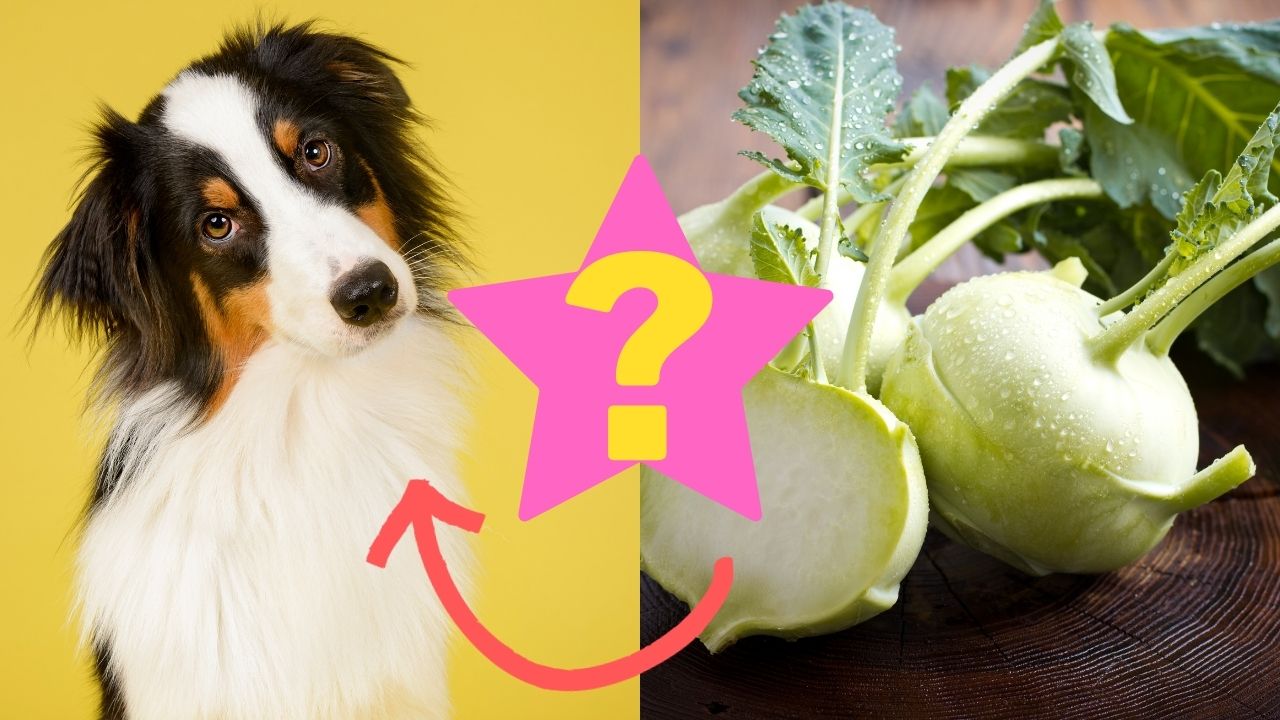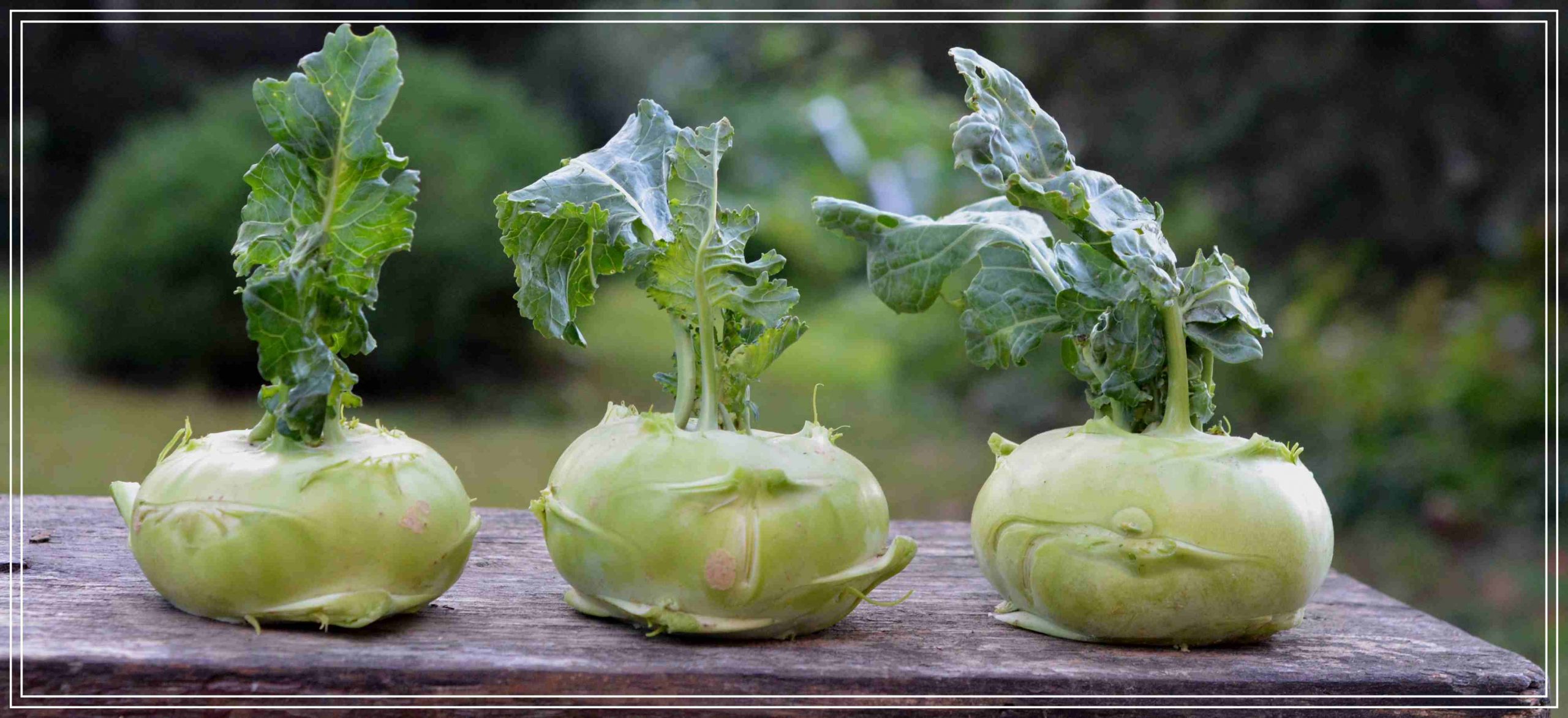
Can Dogs Eat Kohlrabi? What’s kohlrabi? Kohlrabi is part of the cabbage family, and, like cabbage, it has edible leaves, stems, and roots. Kohlrabi is most often eaten raw in salads and crudités but can also be cooked or used as a substitute for turnips or radishes in salads, soups, stews, side dishes, and more. For example, you might replace potato cubes with kohlrabi cubes in soups and stews or use kohlrabi to replace turnips in mashed potatoes.
Can Dogs Eat Kohlrabi? A Helpful Guide for Dog Owners
If you’re a dog owner, you probably know that feeding them is no easy task – dogs have particular nutritional needs! Unfortunately, if you aren’t an expert in canine nutrition, you might be confused about what they can and can’t eat. One of these things might be kohlrabi, so if you have any questions about whether or not your dog can eat kohlrabi, check out this helpful guide for more information!

1) What is Kohlrabi, and how can I identify it?
If you want to get technical, kohlrabi is a cruciferous vegetable closely related to cabbage and broccoli. It has light green skin that can vary in thickness and an average size of about six inches long by four inches wide. The part of kohlrabi you’ll be familiar with is its bulbous bottom, which looks like a turnip or ginger root but smells more like garlic or onion when sliced open. The edible part of kohlrabi is its fleshy inside, where you’ll find clusters of seeds just below the peel’s surface. Just know: dogs (and humans) will often confuse it with their usual fruits and veggies like cucumbers or jicama because they look so similar!
2) Yes, but only cooked
Kohlrabi is a good source of vitamins C and K and fiber, making it suitable for our health. But dogs can’t eat kohlrabi raw—it’s toxic in that state. For dogs to reap their nutritional benefits, they must be prepared somehow. One standard preparation is roasting or grilling; cooking breaks down most toxic compounds into harmless substances. So if you’re wondering whether your dog can eat kohlrabi, check with your vet first and make sure it’s been thoroughly cooked before giving it to her.

3) Yes, but only in small amounts
So you have a picky dog, eh? Let’s get him something healthy then. But can dogs eat kohlrabi, though? Can they eat it without getting sick? Of course, they can! Well. Maybe. Dogs are like people; some tolerate certain foods well, and others do not. So what is kohlrabi, and why should your pup try it out as a new snack? Start reading for more information on kohlrabi for dogs.
4) What if my dog eats some anyways?
Remember, even safe foods for dogs can have unintended consequences, so you should call your vet if your dog does eat some kohlrabi and isn’t feeling well. Although it’s unlikely that an occasional nibble of kohlrabi will be harmful, some dogs may be more sensitive than others. And while most dogs will probably be OK with a bit of kohlrabi as a snack here and there, try not to make it part of their regular diet. It may not cause any issues now, but who knows what could happen down the road! When in doubt about whether or not something is safe for your dog to eat, check with your vet first.

5) How much do I give them?
The best way to calculate dog dosage is to follow these simple guidelines. The number of kohlrabi sticks or leaves you feed your pet depends on his weight and his size. For example, a 50-pound dog may eat about two ounces of kohlrabi in one day. If he’s a small-breed dog weighing less than 15 pounds, he’ll likely only need one stick per day. An average 75-pound dog eats about three kohlrabi sticks per day; for an extra-large breed (such as a Great Dane), that number increases to four or five posts per day. If you’re wondering if that’s enough food for your little guy, look at your kohlrabi, and it should tell you!
6) Is it the same for cats?
Kohlrabi may be toxic to cats due to its high oxalate content. Cats are compassionate creatures, and because of their smaller size, even a tiny amount of poison can be lethal. Contact your veterinarian if you suspect your cat has ingested kohlrabi or anything harmful.
7) Are there any other side effects when eating kohlrabi?
Side effects of eating kohlrabi can include gas, bloating, and heartburn. It’s unlikely for side effects of kohlrabi to occur because it’s a low-calorie food. But as with anything else, you may experience more severe symptoms if you have allergies or sensitivities related to other foods listed in kohlrabi recipes, like broccoli. Also, please note that due to its high water content and lack of nutrients, kohlrabi is a low-energy density food and won’t provide your body with much energy.
8) Does it have any health benefits or properties?
The leaves of kohlrabi, like many other plants, are high in fiber and have been used as a natural treatment for constipation. Because it can make stool soft and easy to pass, kohlrabi is sometimes recommended for people with intestinal obstruction or painful bowel movements. Since dogs with these conditions tend to have problems maintaining bowel control and eating diets high in fiber is not usually recommended, whether or not kohlrabi is a good food choice depends on your pet’s health status. In addition, excessive consumption of fiber by dogs may result in digestive upsets, including gas and flatulence. Remember that feeding any new type of food should be done slowly so it can be watched for potential allergic reactions.
9) Will it make my pets’ urine smell more potent than usual?
Your pets metabolize all foods differently, but luckily, kohlrabi is considered safe for dogs in moderation. Still, it’s possible your dog could develop an upset stomach if he consumes too much of it. In addition, there’s a chance that his urine could end up smelling stronger than usual. If you notice any adverse effects in your pet after giving him kohlrabi, stop feeding it immediately and talk to your vet.
10) When is the best time to feed them this food item?
If you have a dog, you know how frustrating it can be when they won’t eat. Try serving your pet kohlrabi around lunchtime or in between meals. Some dogs are notorious for not wanting their food too hot or cold; in that case, put their dinner out on a plate and let it sit out for 30 minutes. Don’t forget to vary your dog’s diet—it will keep them interested in what they are eating and ensure that they are getting all of their nutrition needs met adequately! Because of its unique taste and appearance, kohlrabi may cause some dogs to want more variety in their daily food intake.
Can dogs eat kohlrabi safely?
Dogs can eat kohlrabi, although they should be given as an occasional treat only. When choosing kohlrabi, look for relatively small and firm; avoid soft, bruised, or shriveled kohlrabis because these could cause digestive problems in dogs. Kohlrabis can also contain several potentially harmful toxins, so it’s best to monitor your dog closely when you feed them kohlrabi. Be careful about giving too much since dogs tend to eat whatever’s on their plate – no matter how much they’ve eaten. It’s easy to overfeed your dog if he’s eating snacks you aren’t tracking throughout the day.
Are there side effects if my dog eats kohlrabi?
If your dog overeats kohlrabi, he might experience mild side effects such as flatulence or diarrhea. You should call your vet if you see these symptoms. For most dogs, eating a little bit of kohlrabi is unlikely to cause harm and serious problems. However, you must consult with your vet before feeding kohlrabi to your pet. Since dogs are different from humans, they can have other food allergies than we do; it’s also possible to be allergic to kohlrabi itself! If you aren’t sure whether or not food is safe for your dog, talk to a professional—preferably one who has extensive experience with animal nutrition and diets!

Is kohlrabi safe to use as dog treats?
Before adding any new food to your dog’s diet, it’s essential to research its interactions with other foods and animals. That way, you can ensure that it’s safe for your pet to eat. In most cases, kohlrabi is considered safe as dog treats; however, some dogs may develop an upset stomach if they consume too much of these plants. To learn more about kohlrabi and how you can use them in your dog’s diet, keep reading!
How do I feed my dog, kohlrabi?
It’s easy to confuse kohlrabi with other vegetables that are safe for dogs to eat (such as broccoli and cucumber). Unfortunately, kohlrabi contains too much phosphorus and calcium to be a good choice of vegetable. This means you shouldn’t feed it to your dog. If you want some foods to share with your dog, here is a list of safe and unhealthy vegetables for dogs.

And finally, what is the best option for your dog if they have eaten kohlrabi and are showing signs of distress?
Vomiting? Irritated eyes and nose? Diarrhea or constipation? Thankfully, you can do a few things to reduce your dog’s discomfort and make them feel better. Let’s get started. First, let’s talk about what kohlrabi is. Then we will go over some tips on how to help your dog if they have eaten kohlrabi.
One of my favorite vegetables is kohlrabi. It is part of the cabbage family and tastes like a cross between broccoli stems and turnips. I love it because it’s easy to prepare (you don’t even need to peel it), cooks quickly (in about 20 minutes), and has a mild flavor that goes well with many other foods. The texture is crispy when raw but softens when cooked until it’s almost like mashed potatoes. If you have never tried kohlrabi, you should try it!

